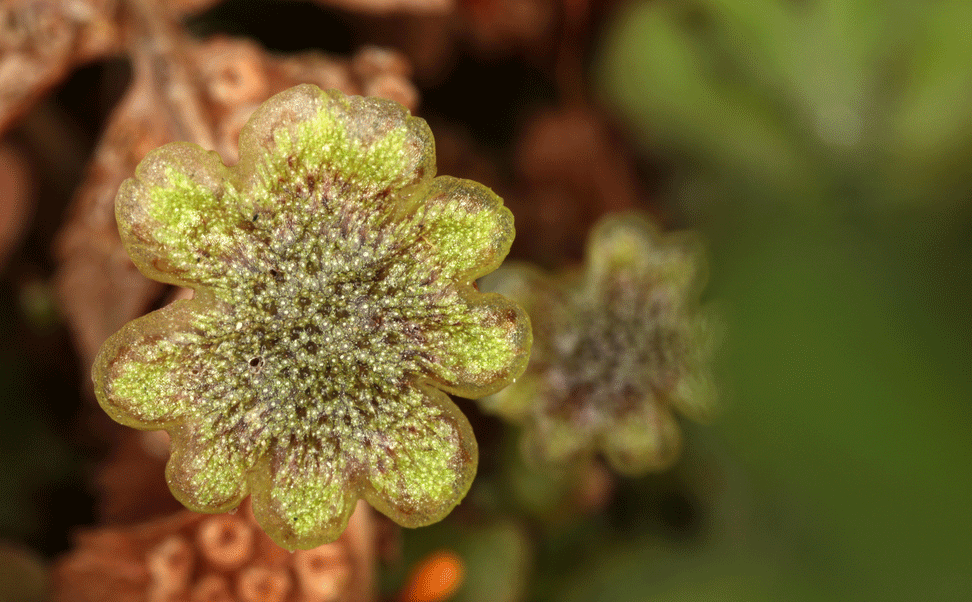
The first plants would have been similar in structure to liverworts. Image: Shutterstock/Collpicto
Soil-dwelling fungi played a crucial role in plant evolution.
When the first plants left the water to colonise land 400 million years of, they would have faced poor soils with very few nutrients and no root systems to extract these. To solve this problem, they joined forces with fungi, which are good at extracting minerals from rocks, but wouldn’t have been able to gain much energy though decomposition.
The fungi were unable to gain much energy through decomposition, partially because of the lack of organic matter in the primordial soils. “By partnering up with the earliest plants, there were obvious benefits to be had to each party,” Dr Katie Field, from the University of Sheffield, says.
Field and her colleagues recreated the environmental conditions of both today and from 400 million years ago using state-of-the-art growth chambers. By examining the plants grown in the chambers — ferns, liverworts and the common garden weed Ribwort Plantain — they were able to observe the importance of this relationship prior to the evolution of roots.
The relationship appears to have altered little over time, with the plants exchanging carbon gained through photosynthesis for fungal-acquired soil nutrients. However, the balance between fungus and plant in terms of phosphorus-for-nutrient exchange has changed over plant evolutionary time and changing atmospheric CO2 concentrations.
The earliest plants would have resembled liverworts and faced much higher CO2 atmospheric concentrations than they would today. When the researchers recreated Palaeozoic atmospheric conditions, they found that the liverwort-fungal relationship functioned with the greatest overall efficiency, with a high phosphorous uptake and a low sugar cost for the plant.
However, this balance shifted with the decrease in atmospheric CO2 to favour the more recent vascular plants with developed root systems. This suggests that fungal symbiosis operated with increasing efficiency in increasingly complex plants as CO2 levels decreased, giving the vascular plants an evolutionary advantage.
“The relationship between plants and fungi now operates with greatest efficiency when the fungi is partnered with a relatively recently evolved, vascular plant,” Field says.
This relationship eventually enabled plants to colonise the world and dominate the planet’s ecosystems. “This greater availability of growth-essential soil nutrients via fungi in itself may have enabled the evolution of larger, more diverse floras, encouraged the evolution of increasingly complex forms, eventually forming the rich and (diverse) ecosystems we are familiar with today,” Field says.






